To make purple paint, blue and red are usually combined. When merging, all tones must be clean so that the result does not have dirty inclusions or spots. Thanks to this, the drawing will become more beautiful and clear. Below you can find step-by-step instructions on how to make purple from different types of paint.
Theory of obtaining purple color from other colors. Proportions
For paints with different compositions, there are several options for merging them to achieve a specific tone.
The following equipment is required for work:
- Brushes.
- A small container of water or a glass. It is recommended to change the water each time so that the brushes do not get clogged.
- Palette. Should be light in color, since a colored surface can distort colors. You can take plastic or other material with similar properties.
- Standard palette set: black with white, greenish, yellowish and reddish.
- Rough canvas. It allows you to check the quality of your brushstrokes.
If you don't have a palette, you can replace it with a plate, cup, bowl, plastic or glass container. All inventory must be clean.
When combining colors, the paints must be uniform, of the same consistency and quality. Otherwise, the end result will be of low quality and blurry.
It is recommended to use palettes from one set, because they are more compatible with each other. Other moments of fusion will be affected by the thickness, appearance, wateriness with oiliness and brightness of the colors.
How to Make Purple from Water Based Paints
Mixing purple from water-based paints is fairly simple, but can cause certain difficulties because it is quite difficult to achieve the saturation of the created shade. However, to solve the problem, experts use whitewash. If they are not available, the saturation is adjusted with a certain volume of water.

The basic violet tone is created by merging red and blue in a ratio of 1:2. Afterwards, various colors are made from the prepared base, additionally using white with blue, pink, black or other tones.
How to Make Purple from Oil Paints
Unlike watercolor and acrylic, oil paints are characterized by greater fluidity. In this regard, such compositions must be mixed very well.
Despite the fact that this property of oil has several disadvantages, it allows to achieve uniform tones. With partial unification it is permissible to make multi-faceted inserts.

This technique can be implemented in 3 ways:
| Way | How to do it |
| Physical or mechanical | When using a foundation base for correction, certain colors are mixed in a special container. As a result, you can get a new color. When combining paints physically, all actions must be thorough so that there are no streaks or untreated areas. This will help to achieve a uniform and pure shade. |
| Overlay | It is acceptable to do it directly on the canvas. An additional translucent and thin layer is applied over the base tone. As a result, the illusion of a combination of colors is achieved, which makes it possible to achieve a new palette in the drawing.
This technological process is quite difficult to use and requires certain skills in glazing. Therefore, beginning artists use this method in rare cases. |
| Optical fusion | Strokes of different colors are distributed at a short distance from each other, placing them at an angle, which makes it possible to create the illusion of unification. Thanks to this method, you can make an even tone. But a certain level of knowledge in drawing is required. |
Oil paints are often mixed using a physical method. More experienced artists use other options at the drawing stage.
Features of obtaining shades of purple
To obtain shades of purple, red and blue paint are combined into one composition. You shouldn't take yellow and other tones that contain it. Otherwise, after the merger is complete, you'll get a grayish or dirty brown tone.
The properties of the final shade will depend on the bluish and reddish tones, so they should be pure and saturated.
If the paints contain a pure violet tone, it is acceptable to use it to create new colors. Due to this, the created shades will become much brighter and less dull, unlike the tones created by merging blue and red.
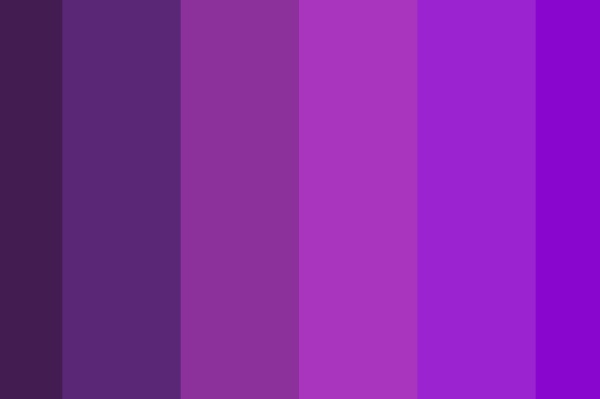
There are approximately 200 types of violet. For the convenience of craftsmen, designers and artists who need to understand colors, each tone was assigned a name.
The most famous and widespread colors are the following:
- amethyst;
- crimson;
- eggplant;
- purple;
- heather;
- grape;
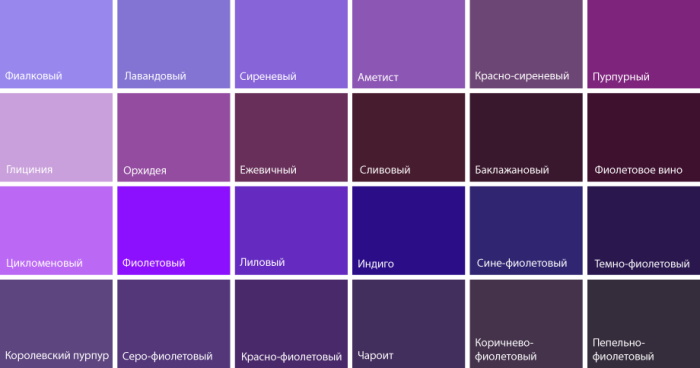
- orchid;
- blackberry;
- pearl;
- indigo;
- fig;
- iris;
- cranberry;
- royal purple;
- lilac-smoky;
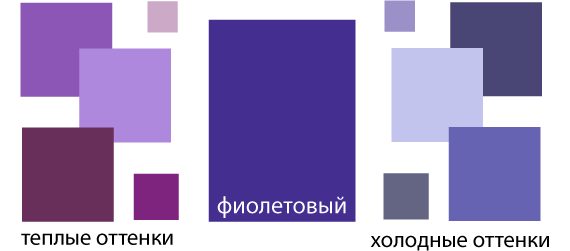
- thundercloud;
- peony;
- purple;
- beetroot;
- lilac;
- plum;
- currant;
- violet;
- lavender;
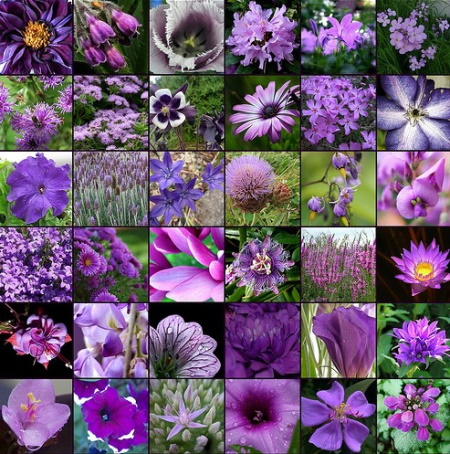
- phlox;
- fuchsia;
- thistle.
Light purple
Light purple is easy to make by adding white to the base. White is gradually added to the main tone to achieve a certain result. In this case, it is recommended to examine the mixed color on the palette.
The proportion of white to base reaches 1:5 respectively. Otherwise, the main shade will be lost.
For slight lightening, purple paint can be diluted with water. This will help preserve its naturalness and richness. It is allowed to combine light shades only on a light palette, because a painted or wooden surface will distort them.

If you merge pink with blue, you can make tones - lilac, thistle. Blue is used as a base, into which pink is gradually mixed. When using cold tones of pink, you get a dull light purple. Warm pink tones add brightness.
By adding a small amount of red paint to the finished lilac shade, you can create a light amethyst tone. When using blue, you get rich berry shades.
Dark purple
Dark purple is achieved by combining dark blue with rich red. The former absorbs the brightness of the latter, resulting in a dull eggplant. To make the resulting tone brighter, you need to increase the amount of red. However, this will not change the situation completely.

When black is combined with reddish, the result is a non-standard dark purple color. To avoid the color being dirty, the black paint should be added very carefully and in small drops.
When lilac is combined with red and indigo, a rich dark purple is obtained. The tone and brightness of the shade will depend on the ratio of colors. Therefore, it is selected at personal discretion.
Lilac
Lilac comes out when violet is diluted with white., which was created by mixing 2 standard colors in different proportions.
Purple is not considered basic, but it contains many emerging tones. As a result, the inclusion of additional colors to the main ones or to purple makes it possible to create almost 200 new hiking tones of the corresponding color: from light lilac to dark purple.

The main problem is considered to be maintaining the correct proportions of certain colors, because there is a thin line between the transition from one color to another.
Lilac is a cold shade, so the initial stage of creation is considered to be the combination of red and blue colors. The resulting tone belongs to group 3, since it can be created by mixing 2 or 3 colors.
When decorating lilac, shading a pinkish or reddish tint, it is permissible to make it colder. To do this, you need to include a minimum amount of black in the prepared composition, which will absorb the red after mixing all the colors.
Lilac color
The purple color is secondary, as it is achieved by merging other shades. When using gouache, it is necessary to pay attention to the name that the purple color bears. There are 2 categories of this shade - C and K.

Category 1 is characterized by the dominance of blue in the violet tone, so it is located between violet and blue in the palette. In category 2, the dominant tone is red, so it is located between violet and red in the color range.
There are quite a few shades of purple, so it is recommended to use whitewash with caution. The standard recipe for a purple tone is to mix white with bluish and red in similar proportions.
It is also acceptable to bring out lilac using blue and pink. In the absence of such shades, you can initially bleach the red so that it becomes pink, then add white to the blue to achieve blue.
Using watercolors to obtain a purple tone does not require the use of white. Ordinary water acts as a lightener, which must be changed very often so that the drawing is clearer and cleaner.
How to make purple color from gouache paints
Mixing purple color from gouache paints is possible by following a series of step-by-step actions.
This:
- Apply a base tone to the surface - light blue or blue.
- Mix red or pink into it until the desired result is achieved.
- The acquired tone can be lightened with white or darkened with a minimum amount of black, which can be changed to dark green.
When working with gouache, it is not advisable to combine colors on a paper sheet or adjust the tone by diluting with water. A new color range is obtained by combining 2 shades on a white plastic palette, in a glass or plastic container.
To obtain a muted or dull color, violet can be mixed with white and black at once. To make a rich purple color, a little yellow can be added to the blue and red composition.

It is advisable to change the liquid used more often so that the shades come out cleaner and the images are clear. When merging a pure red shade, pink is obtained, when using blue - blue.
How to Make Purple Color with Acrylic Paints
Violet color can be obtained by mixing acrylic paints. They are much more convenient and easier to work with than oil paints.
Step by step instructions on how to make purple with acrylic paints:
- Spread the base blue on the palette.
- Add auxiliary red in small portions to achieve the desired result.
- Correct the resulting tone with a white or black shade.
The amount of acrylic is quite difficult to calculate, so the colors should be combined gradually, testing the finished result each time.
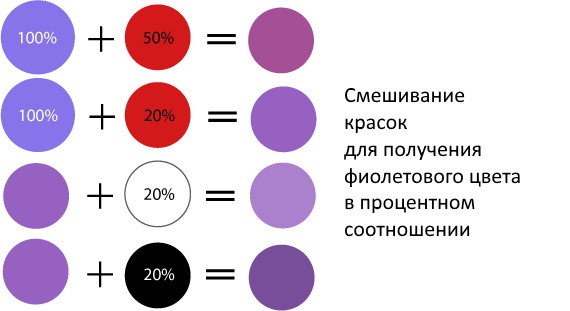
After drying, acrylic paints may slightly change the color. In this regard, before using a new color, it is recommended to make a brushstroke on the sheet, waiting until it dries. Thanks to this, you can prevent errors in the design of the work.
How to make purple color from watercolor paints
You can mix purple color from watercolor paints in the following way:
- Prepare blue and red watercolors in similar proportions.
- Apply blue as the first layer, add red and mix well to avoid streaks.
- To increase the pallor of the resulting tone, add a small amount of water and stir.
The nuances of creating purple from watercolor paints:
- Watercolors are normally diluted with liquid, so lighter tones can be achieved by adding water.
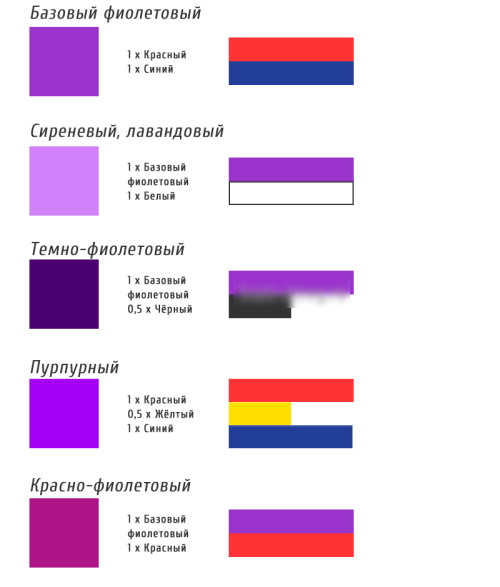
- To achieve bright or dark shades, you will need to include dark blue, pink, black or red.
- To mix watercolors, you need to take only pure paints, which should not contain any inclusions or streaks, otherwise the color will be dull, with a brown or gray tint.
- It is recommended to adjust shades with a small amount of impurities, since such paints deteriorate in a short period of time and absorb other palettes.
- It is allowed to combine paints on a sheet of paper or a palette. When choosing the first option, it is permissible to make strokes on a rough sheet or to mix at the drawing stage.
How to make purple color from gel polish paints
You can mix purple color from gel polish paints in the following way:
- Using a brush, drop a small amount of each shade (blue and red) onto the palette.
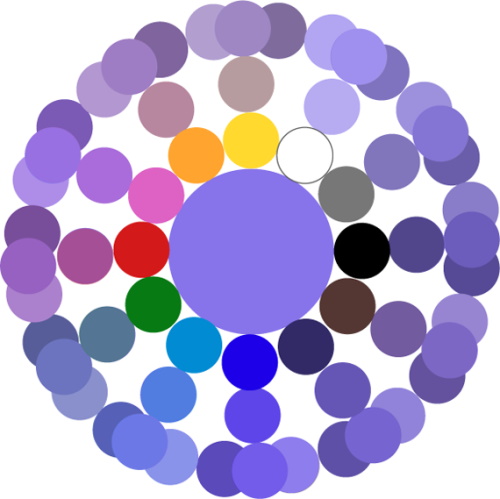
- Stir the mixture with a plastic or wooden stick or brush.
- If you are satisfied with the result, add the palette in similar proportions or continue combining shades to achieve the desired tone.
It is advisable to photograph or mark a well-composed combination of color proportions so that the color and ratio can be accurately reproduced later.
There are nuances that must be taken into account, so that the combination of gel polish paints can fully satisfy the artist's needs:
- If the required shade is needed in sufficient quantity, it is recommended to mix colors with a reserve. This is explained by the fact that it is quite difficult to achieve the same match several times.

- It is the lighter shades that should be added to the dark ones, but not vice versa. Due to this, a certain result can be achieved with a minimum expenditure of materials.
- Under the influence of light, the resulting shade will begin to harden. For repeated use of the tone, it is recommended to keep it in an opaque dark container.
Adviсe
The violet palette includes many different shades used in decor and painting. To achieve a certain tone when mixing paints, it is necessary to make corrections.
For these purposes, it is recommended to use the following tips:
- To achieve lavender colors, it is acceptable to mix gray with violet.
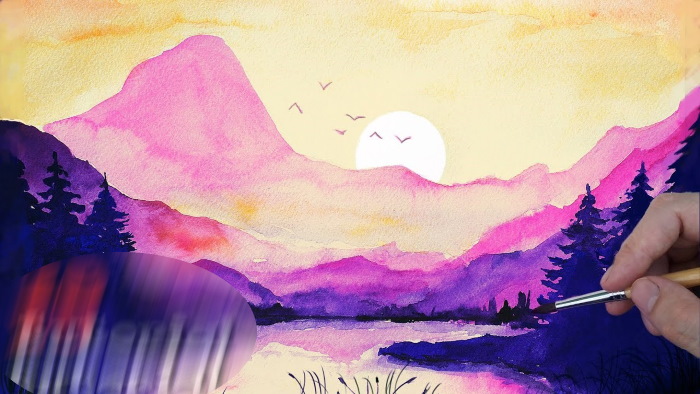
- To depict a night landscape on canvas, violet can be slightly darkened with indigo or blue. The result is a cool but bright shade.
- To achieve a rich plum, dark purple should be diluted with pure red.
- To remove blue without additional darkening, a minimum amount of blue is allowed to be added to violet. The finished shade can be lightened with white if a delicate bluish-lilac color is required.
- If you combine reddish with purple a second time, you get dark shades in the form of eggplant, berry and wine.
- Black should be introduced little by little, because it can darken the violet. As a result, the composition will lose its shade and become dark gray. To prevent this situation, it is better to use dark indigo.
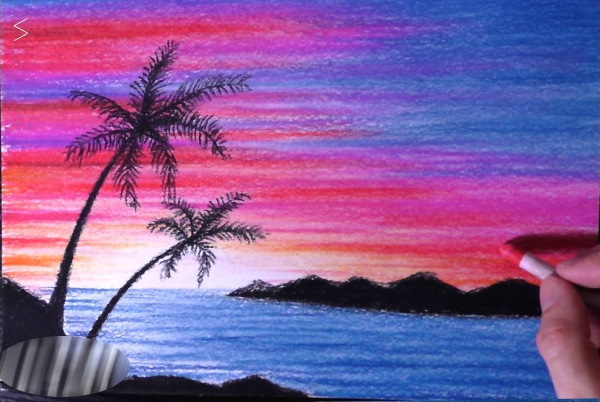
- To make the shade more juicy, you need to include a minimum amount of warm pink. When changing the saturation and ratio, you get a grape and amethyst tone.
When mixing violet, it is necessary to control the cleanliness of the work surface and brushes. The entire work can be spoiled if small particles of another paint get in. As a result, the color will be contaminated with gray or brown inclusions. Therefore, each time, the tools must be thoroughly washed with water.
Video about color mixing
How to mix purple color:
